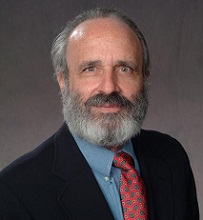 William A. Hyman
William A. Hyman
Professor Emeritus, Biomedical Engineering
Texas A&M University, w-hyman@tamu.edu
Read other articles by this author
Recently I was perusing the menus outside each of two side-by-side moderately high-end restaurants in my neighborhood. Both menus listed multiple items over different times of day, each with unequivocal prices. This publicly posted and clearly understandable information would allow for a fairly accurate estimate of what eating in either would cost.
I then thought about this restaurant cost transparency in the context of the recent wide-ranging discussion of healthcare and drug costs which can have huge variation between providers both locally, nationally, and internationally. In a recent televised discussion, the anecdote was told of someone who could travel from the US to France, buy a year’s worth of inhalers, and pay for his travels with the money saved on those inhalers compared to their price in the US. Even for a single facility the amount actually paid for care can vary widely depend on who the payor is. Moreover, one rarely knows these costs until after care is provided, especially when out-of-network providers pop up on your bill. Itemization seems to compound the challenge of understanding the charges. Recent efforts at public posting of hospital charges have been widely assessed to be largely incomprehensible because of inconsistent and cryptic nomenclature. It might be necessary to wear a button that says “If you are not in my network do not talk to or do anything to me”. This could go next to your “Please wash your hands button”.
These observations caused me to wonder what a restaurant bill might look like if they used a healthcare pricing model. The base charge would be for the food, presumably as listed on the menu. Ok, specials might bring some surprises, but one can always ask in advance what the special costs and get a clear answer. Following the healthcare model there might also be a “facility charge” on the bill. Everyone involved in your meal might also generate additional charges. This could include all of the people you actually saw such as the maître-de, the waiter, the bus person, food runners, bartenders, etc. Of course, there are many people you did not see who also might be included such as the chef and other kitchen staff. There might be a linens charge, a water charge, and a silverware charge. In some parts of Europe, and in some high-end big city restaurants, there could be a bread-and-butter charge and there might be charges for anything extra that you asked for. There might also be the addition of a service charge when tipping is discouraged. Finally, there is the because-we-can-and-you-got-tired-of-looking-at-the-bill charge.
Its not just restaurants of course. Our cable and cell-phone providers are adept at inventing and charging extra “fees”. Similarly, the hotel industry has gotten on board with resort and other fees, or in the case of an urban hotel near me that is clearly not a resort, an urban fee. I was once charged for a safe fee in a motel even though I didn’t use the safe and wouldn’t be reimbursed for it by my employer. (I refused to pay it.) Airlines have also enthusiastically adopted the extra and often hidden fee model of commerce.
The bottom line of these models is to hide the price until after the fact. But one important difference remains. If you feel ill-used by a restaurant, hotel, communications provider or airline you may be able to not patronize them further. However most of us are locked into our healthcare providers by insurance considerations, and in many situations being selective is not a short-term option.
So, thank you healthcare for hiding the cost of our care, concocting incomprehensible drug mark-ups and kickbacks, making comparative shopping almost impossible, surprise billing, and other tricks of keeping us in the dark about what medical care is going to cost.
